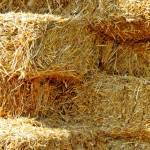Straw Bedding Rates Best for Later Use as Compost

Composting is a popular and productive pastime. Horse owners have at their disposal the perfect organic ingredients to keep a compost pile fully fed and productive. But which of these common stall bedding makes the richest compost—wood shavings, pelletized wood materials, long-cut straw, or pelletized straw?
To find out, researchers at Rutgers University compared the chemical and physical characteristics of composted equine stall waste. A dozen Standardbreds were used in the study, with groups of three horses bedded on one of four different bedding types for 16 hours per day for 18 days. Soiled bedding was removed from stalls and weighed, and all used bedding was then stored separately on a concrete pad. Three compost piles for each bedding type were constructed and equipped with a temperature sensor and data logger.
Water was added and piles were turned weekly throughout the 100-day compost process. Initial and final samples were collected, dried, and analyzed for dry matter mass, organic matter, inorganic nitrogen, electrical conductivity, and soluble (plant-available) nutrients.
This study showed that incorporating a simple aerobic composting system into a management scheme could reduce the volume of manure and produce a material that is beneficial for pastures.
Of the four bedding materials studied, the straw-based materials seemed to be better suited for composting and pasture application. Other factors must be taken into account when choosing a bedding material such as cost, labor, and availability as well as personal preference.








